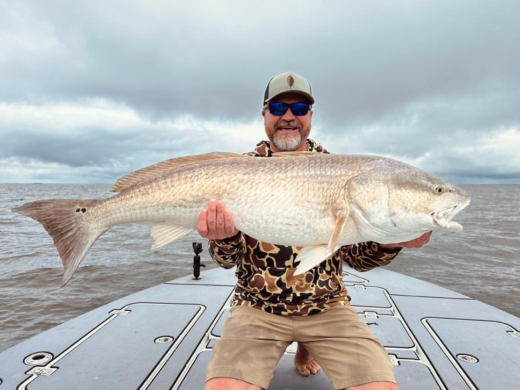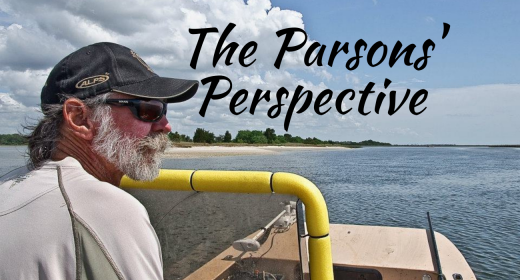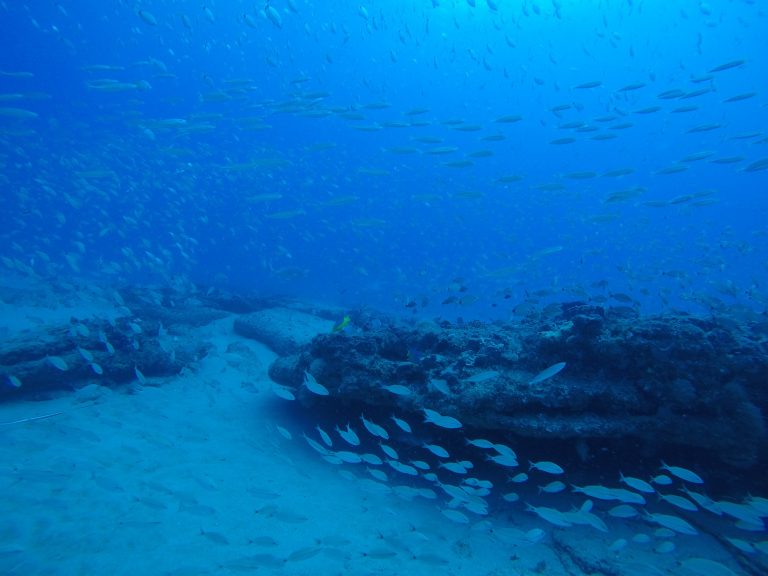Uncovering the Fishing Mysteries of Nearshore and Offshore Bottom
Millions of years ago the sea-level was 40 to 60 miles off the southeast coast, carving out 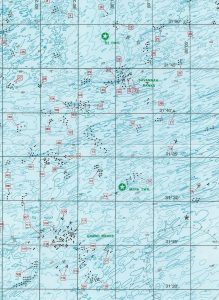 the area we refer to today as the “30 to 100 fathom break”. This wall or “escarpment Terrace” represents a sharp drop of 165 ft. to over 600 ft. of water off the upper continental shelf. Along that wall, we are blessed to have unique places to fish such as “the Point” off Hatteras, “the Steeples” off Cape Fear, “The Georgetown Hole” off Charleston, the “Winyah Scarp” off Murrell’s Inlet and “The Edisto Banks” off Hilton Head.
the area we refer to today as the “30 to 100 fathom break”. This wall or “escarpment Terrace” represents a sharp drop of 165 ft. to over 600 ft. of water off the upper continental shelf. Along that wall, we are blessed to have unique places to fish such as “the Point” off Hatteras, “the Steeples” off Cape Fear, “The Georgetown Hole” off Charleston, the “Winyah Scarp” off Murrell’s Inlet and “The Edisto Banks” off Hilton Head.
As sea level rose during the glacial melting era, it flooded up onto the flatter coastal plain inland of the big break wall periodically stopping at several places (approximately 90 and 60 foot depths) for extended periods of time before again advancing inland. This created and exposed limestone and sandstone rock terraces that generally parallel our existing coastline today in a general NE to SW direction.
So what is so important about the 60 and 90 ft. depths? These two terraces are the most prominent terraces on the shallow upper shelf inshore of the 30-100 fathom break from central Florida to Cape Hatteras.These are simply the most prime inshore habitats to fish.
Along these terraces one will find rocky ledges, humps and bumps, high relief rocky outcrops, low, moderate and high relief reefs, and ridge/runnel topography. These hard bottoms are covered with invertebrates that live permanently on their hard surfaces such as algae, sponges, barnacles, and soft and hard corals. These reefs are living “Live Bottom” habitat attracting many species of marine life and bait fishes. The ledges, outcrops and nook/cranny habitat provide food and shelter for fish in the snapper-grouper family. This is prime habitat for Gag grouper, red snapper, hog snapper and Black Sea Bass. Pelagic gamefish that work these terraces include mackerel, wahoo, Mahi, Tuna, Cobia and Sailfish. This habitat provides the best place for them to hunt, feed, congregate and migrate whether they are migrating north to south or offshore to inland areas.
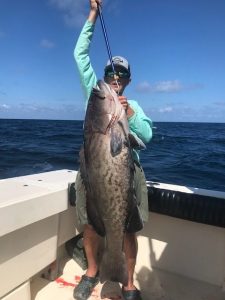 So how should you fish the 60 and 90 ft. terraces? I would first consult your Maps Unique map (and your personal numbers) and identify the 60 ft. terrace (55 to 70 ft.) region and the 90 ft. (85 to 100 ft.) region. Along that depth, you will see many existing live bottom plots already there on Maps Unique. Look at the contour lines connecting those depths and existing live bottom plots and connect the dots with the contour lines. You will clearly see the location and direction of each ancient terrace. If you are the 30 fathom (180 ft.) angler, it is pretty easy to see the Terrace extent due to the extreme amount of relief there. But do use those contour lines to find the steepest and most prominent features on that offshore terrace. Up along the lip of the165 ft. to 180 ft. area, it is literally a continuous wall of live-bottoms bathed by gulfstream waters. On this offshore terrace, throw in the Blue and White Marlin as additional species that hunt that terrace.
So how should you fish the 60 and 90 ft. terraces? I would first consult your Maps Unique map (and your personal numbers) and identify the 60 ft. terrace (55 to 70 ft.) region and the 90 ft. (85 to 100 ft.) region. Along that depth, you will see many existing live bottom plots already there on Maps Unique. Look at the contour lines connecting those depths and existing live bottom plots and connect the dots with the contour lines. You will clearly see the location and direction of each ancient terrace. If you are the 30 fathom (180 ft.) angler, it is pretty easy to see the Terrace extent due to the extreme amount of relief there. But do use those contour lines to find the steepest and most prominent features on that offshore terrace. Up along the lip of the165 ft. to 180 ft. area, it is literally a continuous wall of live-bottoms bathed by gulfstream waters. On this offshore terrace, throw in the Blue and White Marlin as additional species that hunt that terrace.
On the 60 and 90 ft. terraces you will notice many common names for good places to fish.These include “Gray’s Reef” Marine Sanctuary (60ft.), and the “Savannah Banks” and “Brunswick Banks” (90ft.) off the coast of Georgia.
Off South Carolina,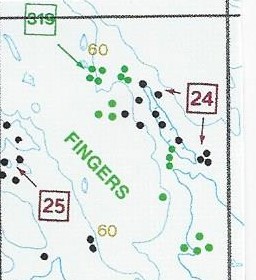 you find the “Red Banks”(60 ft.) and ”Jack’s Bottom”(90ft.), and “The Finger’s” and “The Parking Lot” (60ft).
you find the “Red Banks”(60 ft.) and ”Jack’s Bottom”(90ft.), and “The Finger’s” and “The Parking Lot” (60ft).
Off Cape Fear and Cape Lookout, we have the “30-30 Reef” and “10 Reef” (60 ft.) and “Big daddy” and “Onslow Ridge” in (90 ft.) of water.
There are at least two other minor terraces I have observed on the inner shelf. These are located in the 110 ft. range and the 45 ft. range. The 110 ft. has scattered but rather substantial areas of large ledges and outcrops. “Santee Banks” southeast of Georgetown comes to mind. My experience along the 45 ft. terrace is small ledges, scattered outcrops, but significant areas of low-relief flatter hard bottom. This is my favorite summer and fall season area for doormat Flounder and large King Mackerel.
But I do challenge each captain to “go out-the-box” and do some “Hunting” along each of 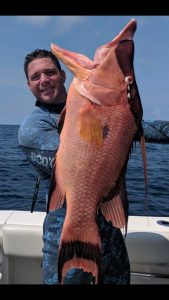 these 3 major terrace systems and the minor ones as well. You are likely to find new interesting places and places that are not under any fishing pressure. Fish are looking for the very exact thing you are looking for—bait and structure. I love to troll baits in new places for top water gamefish. If you are bottom fishing and marking a lot of bait on the bottom regardless of relief—simply go no further. Drop your jigs down. The offshore bottom environment is a fascinating gift and there are literally 1000,s of places to explore and find. Remember to consult your latest satellite data on water regimes. You need to find water mass edges, isolated pockets of Gulf water, and temperature and water clarity breaks. If the water is right on these unique bottom areas—the terrace bite is even more totally awesome for top water angling. For me— It’s all in the art to hunt!! Happy Fish’n!!
these 3 major terrace systems and the minor ones as well. You are likely to find new interesting places and places that are not under any fishing pressure. Fish are looking for the very exact thing you are looking for—bait and structure. I love to troll baits in new places for top water gamefish. If you are bottom fishing and marking a lot of bait on the bottom regardless of relief—simply go no further. Drop your jigs down. The offshore bottom environment is a fascinating gift and there are literally 1000,s of places to explore and find. Remember to consult your latest satellite data on water regimes. You need to find water mass edges, isolated pockets of Gulf water, and temperature and water clarity breaks. If the water is right on these unique bottom areas—the terrace bite is even more totally awesome for top water angling. For me— It’s all in the art to hunt!! Happy Fish’n!!

You may be interested
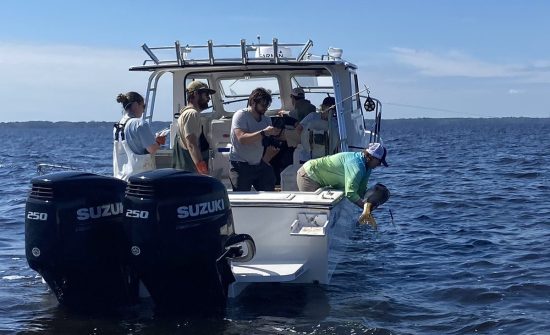
Satellite Tracking Study Aims To Unlock More Red Drum Secrets
Tim Wilson - April 8, 2025A pilot study tracking a popular saltwater fish was not expected to yield as much information as it did in its first year. When the North Carolina…
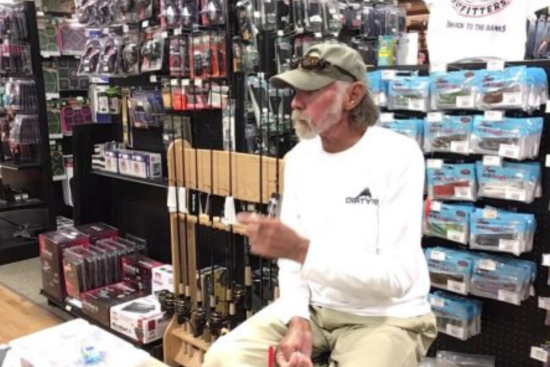
9 Things Fishing Guides Won’t Tell You
Tim Wilson - April 8, 2025We’re all amazed at how fishing guides nearly always know what to do and where to go to put fish in the boat. Most guides are fishing…
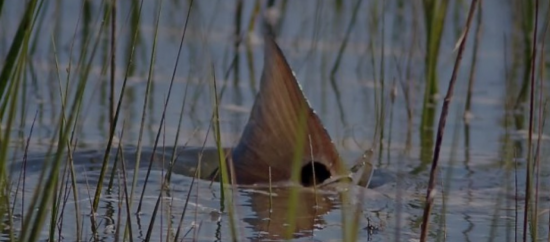
How the Moon Phase Impacts Inshore Fishing
Tim Wilson - April 3, 2025The late spring and early summer months are a time of the year when the inshore goes thru a transition period. It's when the fish come out…
Most from this category
